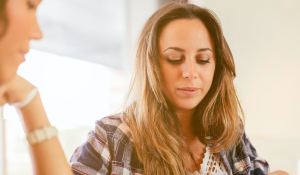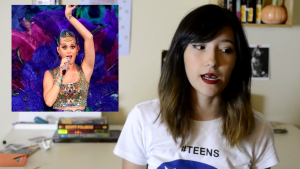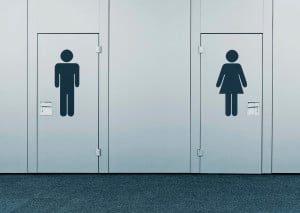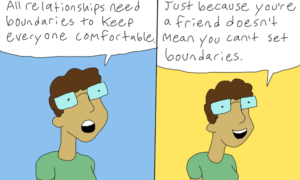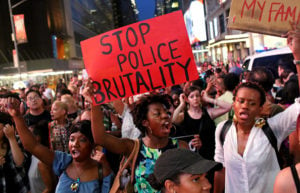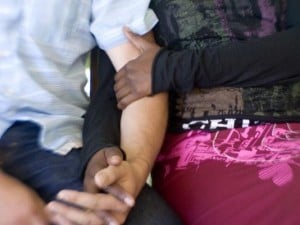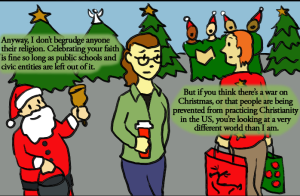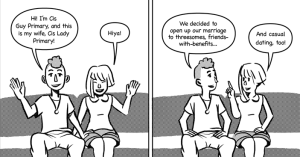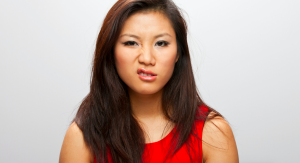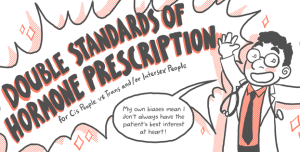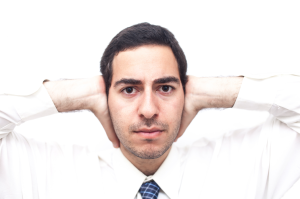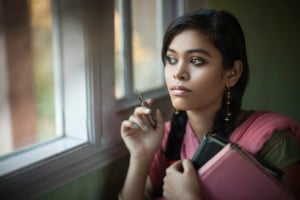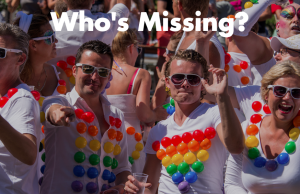
Originally published on the Huffington Post and republished here with the author’s permission.
On the evening of June 28, two very different celebrations took place to mark the most historic New York City Pride week in decades.
The flashier of these celebrations was the iconic Dance on the Pier. As the Pride Parade came to a drizzly end, an exuberant crowd of young, gay and mostly white men made their way to Hudson River Park’s Pier 26, where Ariana Grande headlined a big-budget outdoor mega-party.
Complete with laser lights, multiple jumbotrons, fireworks and a legion of half-naked go-go dancers, the event was a brazen testament to the newfound trendiness of urban gaydom.
Admission started at $80, but that didn’t stop 10,000 enthusiastic fans from snatching up tickets to what organizers billed as one of the world’s top-tier LGBTQIA+ events.
If any of those 10,000 attendees had taken a break from the dancing and glanced across the Hudson to the north, they may have seen the outline of the Christopher Street Piers, where a celebration of a very different kind was taking place.
Here, a motley crowd of queer homeless youths — who definitely could not afford admission to Dance on the Pier — decided to throw an impromptu party of their own.
With the bass from the Ariana Grande concert pulsing in the background, the youths — men, women, cisgender, transgender, gender nonconforming, nonbinary, gay, lesbian, bisexual, queer, Black, and Latino — drank, smoked, sang, vogued and played cards under the dim light of the street lamps.
Both parties paid homage to a common past by celebrating Pride and the decades of struggle it commemorates. Both parties acknowledged a common present by sharing space on the Hudson River Piers, the heart of New York’s LGBTQIA+ community.
But the extravagant Ariana Grande concert and its upscale audience could not have seemed more out of place among the piers that have served as a safe haven for the queer community’s most marginalized — mostly queer homeless youth of color — for decades.
And this growing rift between mainstream and marginalized LGBTQIA+ people makes me fear that our community won’t have a common future.
While the gay rights movement in the United States has achieved a remarkable string of successes over the past several years, including the invalidation of the Defense of Marriage Act and the legalization of gay marriage, not everyone within the LGBTQIA+ community is equally positioned to take advantage of these successes.
After all, although marriage is a declaration of love, in many ways it is also an expression of interpersonal stability, economic security and social respectability — attributes that many marginalized LGBTQIA+ people do not have.
So while love may have won for middle and upper-class gays, many transgender people, queer people of color and queer homeless youths instead find themselves left behind by a community that has become increasingly defined by the interests of its white, cisgender, middle and upper-class members.
Over a decade ago, this powerful subsection of the LGBTQIA+ community decided that the fight for marriage equality would be the modern cornerstone of the gay rights movement – and for good reason.
Marriage is an institution of respectability. The fight for gay marriage suggested that the gay community had grown up, left its radical past behind and was ready to join mainstream society as a reputable partner. It dismantled the hypersexual, flamboyant gay stereotype and replaced it with a more wholesome image that mainstream America found more palatable.
It was also an assertion that the gay rights movement had reached an important milestone, transcending basic issues of health, safety, economic security and social stability.
But the problem is, it hadn’t.
- Over 20 percent of all LGBT youth are homeless, and 40 percent of all homeless youth are LGBT.
- 58 percent of queer homeless youth have been sexually assaulted.
- 64 percent of transgender people make less than $25,000 per year.
- 41 percent of transgender people and 62 percent of queer homeless youth have attempted suicide.
- And at least 17 transgender women have been murdered in the U.S. so far this year.
And yet, as middle and upper class gays poured time and money into the fight for gay marriage, these and other less marketable LGBTQIA+ issues were largely forgotten.
The number of queer youths on the streets rose. Violence against transgender people increased.
And the gap between the ‘mainstream’ queer community and its fringes grew.
As one gay, black and homeless youth on Pier 45 told me, “It’s like once they had marriage equality it’s like, ‘Nah, we don’t feel your pain any more, sorry.'”
Is this to be the brave new gay world?
A world in which the public face of the queer community – the gay, the white, the cisgender and the wealthy – take their place among society’s elite, leaving the transgender, the non-white, the poor and the homeless to fend for themselves?
A world where queer youths are disowned and thrown out on the street by their families, only to find that they are also considered second-class citizens in the community they reach out to for love and acceptance?
A world of partition, indifference, neglect and self-interest?
Unfortunately, this dystopia has already started to become reality.
As ‘mainstream’ white gay culture has become not only socially accepted, but also widely marketed and commercialized, middle and upper class gay interests have become inseparably intertwined with the gentrification of historically gay spaces and the criminalization of poor, non-white, transgender and homeless individuals within these spaces.
For example, Greenwich Village – long a refuge for queer youths fleeing rejection and persecution – has become a shining showcase for the gay community’s newfound prosperity, complete with organic juice bars, small dog boutiques and seemingly hundreds of overpriced coffee shops.
And as the gay elite have become increasingly integrated into the power structure of society, many have used their newfound influence not to alleviate the inequalities within the queer community, but instead to cement their position at the pinnacle of an expanding LGBTQIA+ hierarchy.
Instead of collaborating with queer homeless youth to recreate the old Village’s culture of diversity and acceptance, many residents of this new Greenwich Village – many of them gay and lesbian – have sought to “clean” their streets of the “Bloods and Crips“, “gangs of unruly youths” and “gay youth of African-American and Hispanic origin” – all seemingly references to queer homeless youth of color.
Instead of proudly embracing the Christopher Street Piers’ rich history as a haven for disowned queer homeless youths, some residents have tried to eject the youths from the piers altogether, arguing that times have changed and queer youth no longer need safe spaces.
And instead of protecting queer homeless youths from harassment, the Christopher Street Patrol has increasingly hounded them for petty quality of life infractions, a strategy eerily similar to that of the anti-gay vigilantes the patrol was in part founded to combat.
As one black transgender youth put it, “The damage comes from our own community. You’d think we’d be safe on our own piers.”
But the worst part about this trend is that because the discrimination is perpetrated at least in part by our own community, it is given a sense of legitimacy.
After all, it can’t be homophobic if it’s queers versus queers, right?!
With the stunning advances in gay rights and growing prosperity of America’s LGB community over the past decade, it’s easy to forget that the very groups we are now marginalizing are the ones who launched the queer rights movement at a time when being gay was still a crime.
If queer homeless youths, black drag queens, transgender women and gay hustlers had not risen up against oppression at Compton’s Cafeteria and Stonewall over 45 years ago, we would not have gay marriage today.
Our movement was built on the back of our community’s margins.
So as long as LGBTQIA+ youths sleep on the street, transgender people fear for their lives, and queer people of color live in poverty, my new right to marry will be diminished.
The LGBTQIA+ movement still has a long way to go; I just hope the next big battle for queer rights isn’t against the queer community itself.
[do_widget id=’text-101′]
Colin Walmsley is a government major and anthropology minor at Dartmouth College. Outside school, Colin is an advocate for the rights of LGBT people and other marginalized groups. He has worked at New Alternatives drop-in center for LGBT homeless youth in New York City, and created a documentary about convicted murderers who participate in the Concord, N.H., prison’s art program.
Search our 3000+ articles!
Read our articles about:
Our online racial justice training
Used by hundreds of universities, non-profits, and businesses.
Click to learn more





